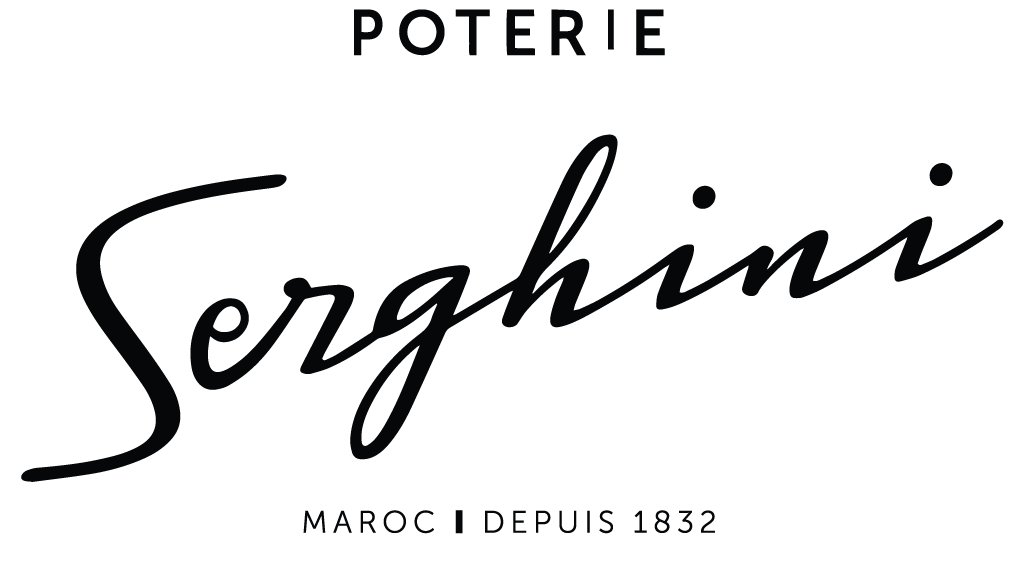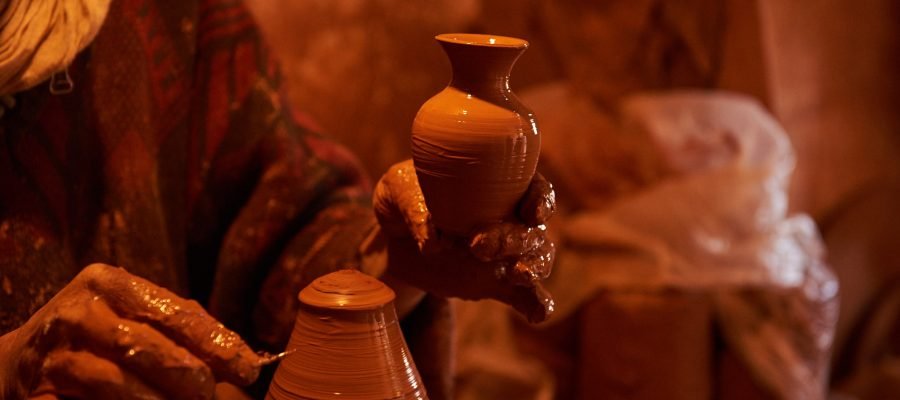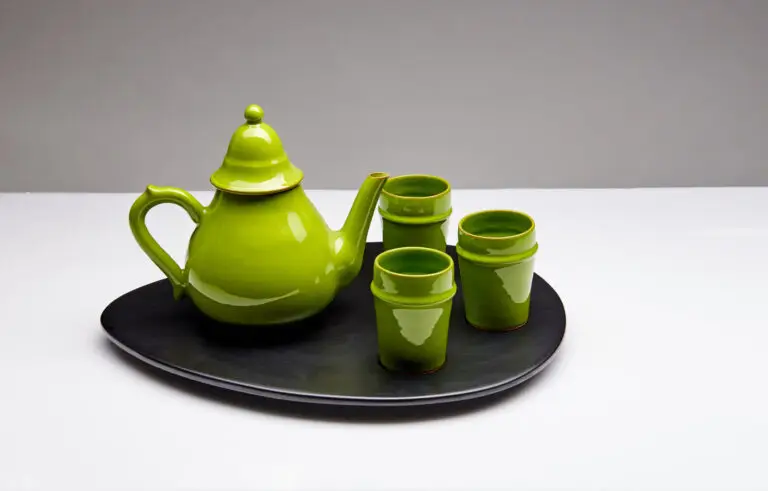The Moroccan artisan, a true artist of the earth, embodies the richness and diversity of their country’s culture. With remarkable skill, they transform raw materials into unique art pieces, showcasing their ancestral expertise and boundless imagination. Each region of Morocco, with its own cultural and artistic identity, distinctly inspires its artisans, thereby enriching the art of pottery with local nuances.
Artisans and Their Inspirations
Moroccan pottery is deeply connected to the lives and traditions of its artisans, the maalems, who are its creators. In every town and village, these artists shape clay with knowledge passed down through generations. Each maalem has their own story, often rooted in a long family lineage dedicated to the art of pottery. They work the clay not just with their hands but also with their soul, infusing each piece with their spirit and personal experience.
The inspirations of Moroccan artisans are as diverse as they are rich. They draw from their natural surroundings – the earth, sea, mountains – and also from folk tales, beliefs, and the history of their region. The geometric and floral motifs often seen in their work reflect the influence of Islamic architecture and the abundance of local nature. These patterns are more than mere decorations; they are laden with symbolism and deep meanings, telling stories of faith, love, wisdom, and everyday life.
Challenges Faced by Moroccan Pottery Artisans
Moroccan pottery, an ancient art rich in history, faces many challenges in the modern world. Artisans struggle to keep their traditions alive amidst rapid industrialization and mass production. They compete with less expensive products, often at the expense of authenticity and quality. Moreover, passing traditional knowledge to younger generations is a challenge, as many are drawn to more modern and lucrative careers.
In facing these challenges, key players like Poterie Serghini play a vital role. As an artisan workshop, Poterie Serghini goes beyond merely producing pottery; it actively dedicates itself to training and employing local artisans. This approach not only preserves traditional pottery techniques but also economically supports local communities. This commitment demonstrates the importance of a holistic approach in supporting traditional crafts. By investing in the skills of local artisans and valuing their work, Poterie Serghini contributes to the survival and flourishing of Moroccan pottery art in a contemporary context.
Regional Techniques and Styles
The diversity of pottery styles in Morocco vibrantly reflects the country’s different regions, each possessing its unique artistic heritage and methods. In Fez, the pottery is famed for its deep cobalt blue, a color achieved using local cobalt ore and specific firing techniques. Fez’s delicate and complex patterns reflect the influence of Islamic culture and the city’s architecture, with meticulous use of geometry and symmetry.
In Safi, the birthplace of Poterie Serghini, the tradition of blue faience continues. Safi’s artisans excel in hand modeling, creating elegantly shaped pieces. The bright and bold colors of Safi, ranging from deep blue to emerald green and sun yellow, are carefully applied, giving each piece a unique character.
Salé is known for its pottery in more subdued tones, often accentuated with Berber and Andalusian motifs. These designs, often representing natural elements or traditional symbols, pay homage to the region’s rich cultural history. The use of locally mixed clays for glazing in Salé speaks to the deep connection between the artisans and their natural environment.
Each region of Morocco, with its own color palette, patterns, and techniques, contributes to the rich mosaic of the country’s pottery art. These regional variations celebrate Morocco’s cultural diversity and reflect the history and influences that have shaped each artisan community. Visiting the souks and workshops, one discovers not just art objects but also stories of people, traditions, and the union of nature and art.




